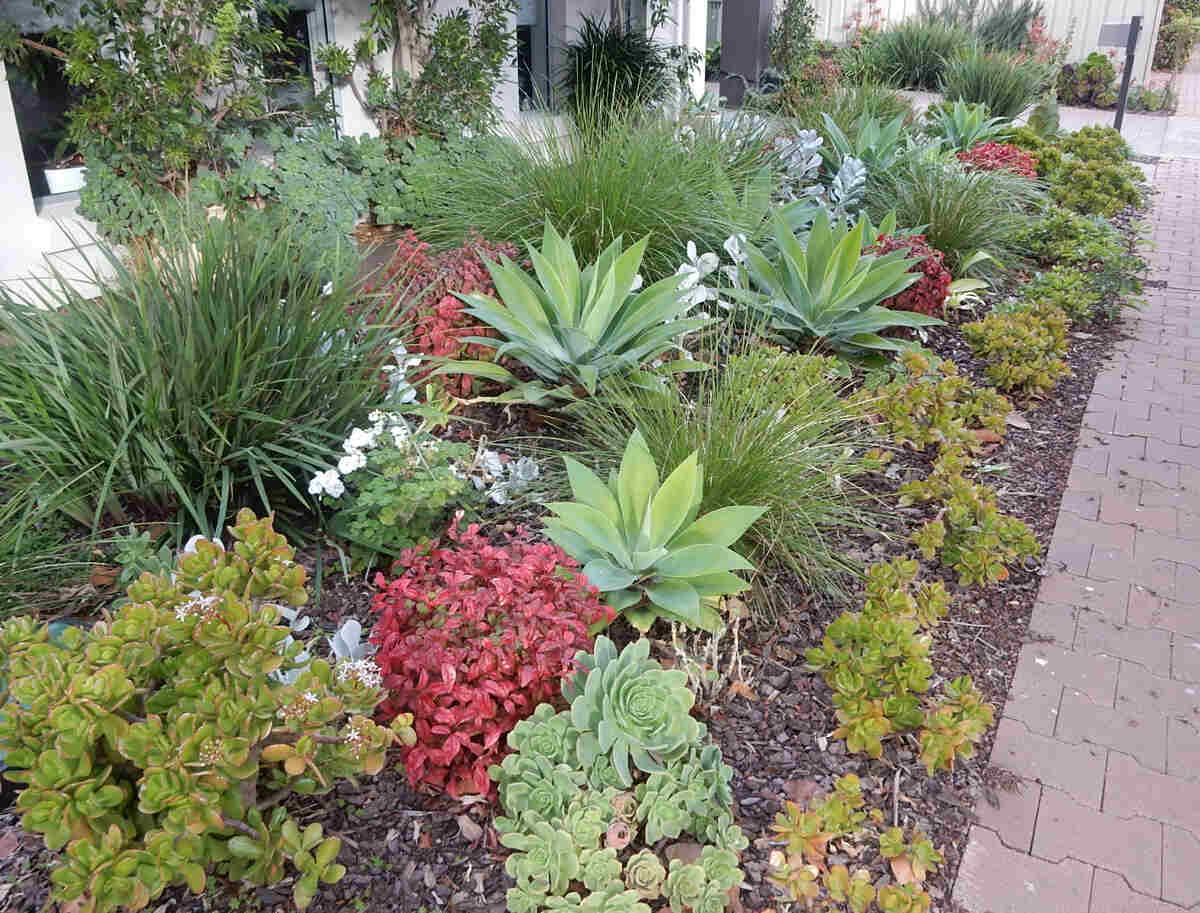
In recent years, more parts of the country have experienced severe drought, so severe that low water levels slowed the mighty Mississippi’s barge traffic. The lack of rain also impacts the yard and garden, sending gardeners on the hunt for drought-tolerant landscaping ideas.
In this article, you’ll find ideas for a drought-tolerant landscape, what resources you can tap into, and some tips for conserving water in the yard.
What Is Drought-Tolerant Landscaping?
Drought-tolerant landscaping means creating a landscape that can thrive with minimal water. This style of landscaping is especially beneficial in areas that receive little rainfall and experience long, dry periods of drought.
A drought-tolerant landscape is typically made up of drought-tolerant and drought-resistant plants. Drought-tolerant plants can perform well with minimal water, whereas drought-resistant plants can thrive without water for long periods.
7 Drought-Tolerant Landscaping Ideas
1. Grow Native Plants

When choosing drought-tolerant plants for your landscape, start with plants native to your area. Native plants have evolved in your state or region and likely have experienced desperately dry periods in their history. Over time, the plants have adapted to survive. They may shrivel and die after a long, hot, dry period, but the roots likely will survive to renew the plant next season.
Look for your state’s native plant organization or check with your county extension office for recommended plants. Gardeners in the Southwest and California have very different selections for their plants than others in the country.
2. Improve and Protect the Soil

Soil rich in organic matter retains moisture. Layer in chopped leaves, rotted manure, finely shredded bark (such as pine fines), and compost. Adding organic matter in spring and fall goes a long way at improving the soil.
Mulching the garden beds with wood chips, shredded bark or compost also helps the soil retain moisture around the roots. Groundcovers also act as an effective green mulch.
3. Install Drip Irrigation

Drip irrigation distributes water directly to the soil at the base of the plant. Drip irrigation is the most efficient way to water plants because there’s no waste. Avoid overhead sprinklers and garden houses, which waste water by over spraying and through evaporation.
If there’s no drip irrigation system, hand water the soil at the base of the plants with a showerhead nozzle.
4. Surround Trees With Water Bags

Photo Credit: BanksPhotos / Canva Pro / License
Newly planted trees need regular irrigation. Look for tree-watering bags to wrap around the base of the plant. These bags are filled with water, which slowly drips into the ground while avoiding water loss from evaporation and runoff. Refill the bags as necessary.
5. Reduce the Lawn

Photo Credit: Forest and Kim Starr / Wikimedia Commons / CC BY 3.0 US
For a lot of people, the lawn is the biggest water guzzler on their property. Reduce the lawn’s size and its water use by planting drought-tolerant shrubs and perennials. Or plant a water-wise turf that has low water needs, such as tall fescue, buffalo, zoysia or Bermuda grass.
6. Group Plants Together With Similar Water Needs

Grow plants together with similar needs to create a drought-tolerant garden. In this low maintenance garden, plants that don’t need extra water are in one place, while those with greater water needs are in another. This ensures only the plants that need water will get it, saving time when watering the garden. Also place plants close together to allow them to shade the soil, keep it cool, and slow water loss.
7. Install a Xersicape

Xeriscaping is a style of drought-tolerant landscaping. A xeriscape doesn’t just survive drought– it thrives in drought. A xeriscape requires little to no supplemental irrigation, and is typically made up of native plants, succulents, gravel, rock gardens, and mulch.
Connect With a Local Professional
If you need help planting your drought-tolerant landscape, connect with a local landscaper. A professional may suggest drought-tolerant plants, propose design ideas, and install your new water-wise landscape.
Main Image Credit: Michael Coghlan / Flickr / CC BY-SA 2.0





